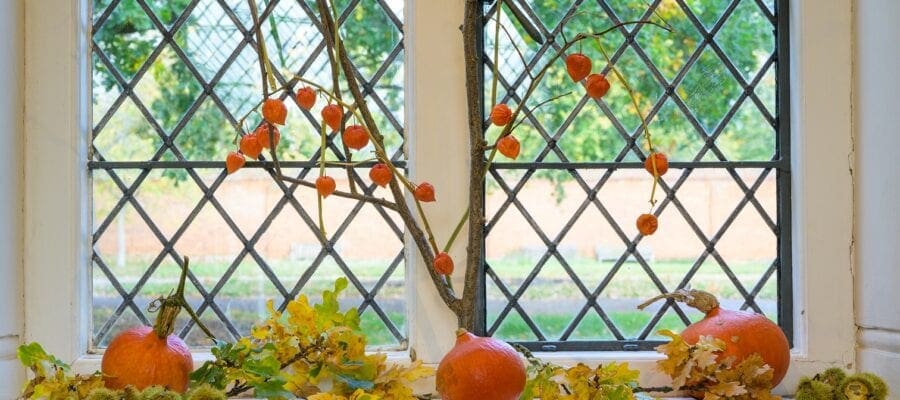The National Trust is urging people to seek inspiration from nature for displays and get creative in their pumpkin carving to bring others joy this Halloween.
Waste from Halloween was estimated at the equivalent of 83m plastic bottles in throwaway outfits alone last year, according to charity research. Evidence also showed eight million pumpkins became food waste.
With the annual celebration of ghosts and ghouls growing in popularity and the coronavirus restricting ‘trick or treating’, the conservation charity is encouraging people to start celebrating the festival in new ways – with a focus on nature, sustainability and re-use.
Andy Beer, nature author and regional director at the National Trust says: “By focusing on what we can find and see in nature at this time of year, we can live more in the moment and really notice the changing seasons.
“With the berries in hedgerows, nuts falling from the trees and the changing leaf colours, it’s a great time to bring some of nature’s own wonders into the home to create autumnal inspired decorations to enjoy, before using them for compost or recycling in garden waste.
“Halloween is also a time when families and ‘crafters’ especially can get really creative with new and fresh designs for carving swedes, squashes or pumpkins. Instead of the typical face – why not try carving a picture of your own house, wild animals or even autumn leaves and leave as a nice surprise on your doorstep for passers-by to enjoy.”
The conservation charity is championing the approach of sharing seasonal joy due to the success of its spring #Blossomwatch project, where social media users were encouraged to share pictures of blossom emerging across the nation to help lift people’s spirits when the country was in the grips of a full lockdown.
Rosie Fyles, head gardener at Ham House and Garden in Richmond has been taking inspiration from her garden and nature to create displays for the property this autumn.
She says: “The key thing with autumnal decorations is to take your inspiration from the colour, shapes, structure and texture of the things you can find around you. You can use dry yellow and orange leaves for windowsills with a squash or quince nestling among them. Consider autumnal fruits, nuts and vegetables as potential decorations. How can you show them off and enjoy them in your home? Also consider what might work well in a vase – simple shapes like long sticks and tall stemmed dried flowers can be very effective. You can really bring a sense of the outdoors inside if you choose carefully.”
As for making the most of the vegetables used for carving, Rosie continues: “The fantastic thing about carving or using swedes, squash or pumpkins for decoration is that nothing need go to waste.
“The flesh can be used for anything from soups to scones, the seeds can be toasted as an additional topping or used for bird food. And, as for the carved creations, once the outer skins start to degrade, they can be composted or put them out for the birds to enjoy.”
Andy Beer concluded: “We know from our nature connection report which we launched earlier this year how noticing nature can boost people’s wellbeing. With the nights drawing in it’s going to be even more important that we all get outside to get our daily dose of nature.”
For more information on autumn decorations and recipe inspiration, visit nationaltrust.org.uk and share your images of autumn decorations or vegetable carvings using #EveryoneNeedsNature





